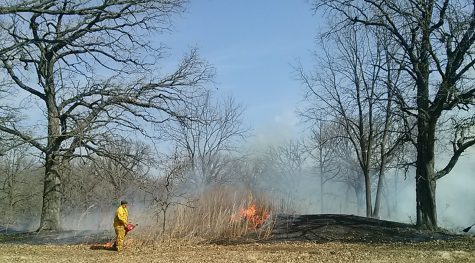Why is it important to preserve the Whitewater effigy mounds?
October 9, 2022
The Whitewater Effigy Mounds Preserve includes thirteen burial mounds built by indigenous peoples on the far southwest edge of what is now known as Whitewater, Wisconsin. Several mounds were built in the shape of animal effigies, such as turtle, mink, panther, and bird. Most of the mounds are geometrically shaped, including linear and conical shapes.
The mounds comprise an irreplaceable part of our city’s and state’s history and a past that reaches back to the first people known to have been here. To these people and their descendants, the mounds preserve is a sacred site.
This 25-acre site was purchased by the City of Whitewater in 1974. For the past 48 years, the City has been responsible for caring for this unique cultural resource. This care has included primarily mowing a walking path. Occasional prescribed burns of the preserve in the early spring or late fall have been employed to try to control invasive plants.

Several reasons exist for preserving this prehistoric site. First, this is a sacred burial site built by hand several thousands of years ago. Great human effort over hundreds of years went into creating these earthen artworks. The mounds’ existence today connects us with people that have lived here long before us. Today when we visit these mounds, we are seeing the same landscape that the mound builders created long, long ago.
In addition to the mounds at the preserve, there is a need to conserve the native species of plants and wildflowers as well as the ancient oak savannah that exists at the site.
Third, this site has received a national honorary recognition by being listed on the National Register of Historic Places in 1991. In addition, the City’s Common Council designated it a Local Landmark in 1999, as such protecting it by municipal code from development and destruction. Today, this cultural resource is managed by the City’s Parks and Recreation Department as one of its 19 parks.
To do anything less than the preservation and maintenance of this irreplaceable site or to compromise it in any way would be an insult to the indigenous people.













